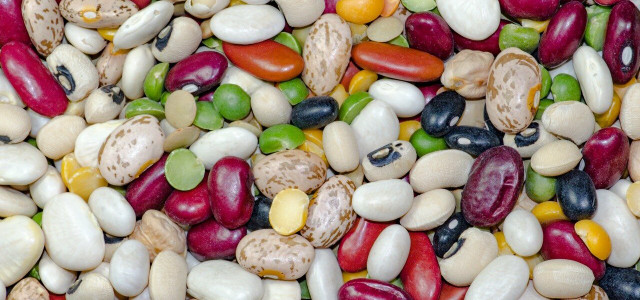This article offers a complete guide on how to cook dried beans. This includes various soaking methods, stovetop instructions, and other tips for making the most of your legumes.
Cooking your own dried beans for homemade recipes is often superior to the convenient canned alternative. They have a nicer texture and better flavor, especially when you’ve perfected the art of spicing and seasoning.
Other benefits of dried varieties include that they are almost always cheaper and packed with more nutrients such as protein, fiber, iron, potassium, and magnesium. Cooking dried beans also usually means reduced packaging and waste. Additionally, this option contains much less sodium than canned beans.
Dry Bean Varieties
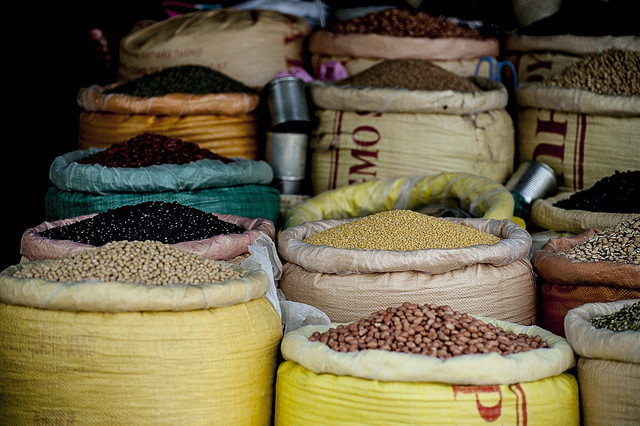
(Foto: CC0 / Pixabay / StockSnap)
A simple stovetop cooking method can be used for the followed dried bean varieties:
- Chickpeas
- Navy Beans
- Black-Eyed Peas
- Black Beans
- Pinto Beans
- Adzuki Beans
- Great Northern Beans
- Cannellini Beans
The methods outlined in this article are not suitable for lentils or split peas which are not beans, but in the legume family. Check out our article for a better understanding of the different types of legumes.
It’s best to cook your dried beans when they are at most two years past their harvest date, otherwise they can be dry and not cook properly. While this information can be difficult to find, paying attention to expiration dates or having a well-organized pantry can help with avoiding the use of old beans. An even better option would be to track down local beans either through farmers’ markets or from a supermarket that sells local products. In this case, it is usually fairly easy to find the phone number of the farm to inquire about harvest dates.
Although it is optimal to consume dried beans within this date range, they can last more than three years when stored properly, To avoid food waste and maintain freshness, store in a cool, dry, and dark place in a sealed bag or container. If you’re unsure your beans are still edible, some signs to watch out for are if they smell off, have signs of mold, or if there are bugs in the packaging. Otherwise, the only way to tell is by cooking the dried beans and testing them because their flavor degrades after roughly two to three years in age.
When and How to Soak Dried Beans
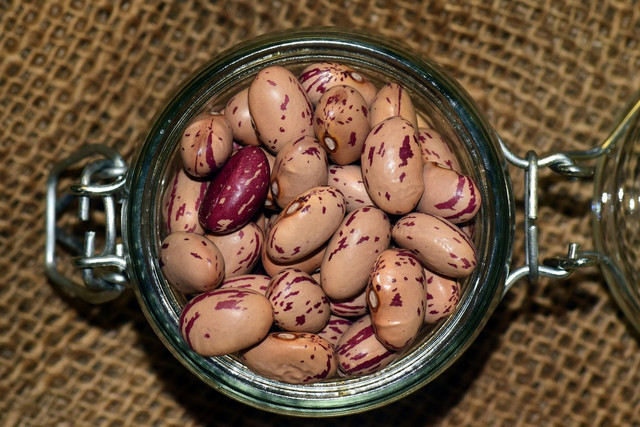


(Foto: CC0 / Pixabay / ulleo)
Whether deciding between an overnight soak, a quick soak, or no soak at all before cooking dried beans, each method has its place depending on your needs.
Soaking dried beans will often greatly reduce the cooking time. Sometimes this is not necessary, as is the case for Garbanzo and Great Northern Beans which usually only take about 30 minutes less to cook when soaked. Here’s a list of the benefits of each soak method and the techniques behind them. Generally, each cup of dried beans will require three cups of water during their soaking process.
Overnight Soak
- Reduces cooking time
- Creates a tender, plumper, and more evenly cooked bean
- Eases the beans’ effect on your digestive system (Good for those with sensitive stomachs)
How to:
- Put beans in a bowl, cover with plenty of water. Cover the bowl with a lid.
- Leave overnight or for around 12 hours.
- Drain and rinse, then proceed with the recipe.
Quick Soak
- Reduces cooking time
How to:
- Cover beans with several inches of water in a pot and bring to a boil.
- Remove from heat and leave pot with water for at least half an hour depending on the bean.
- Drain and follow with own recipe.
No Soak
- No planning
- Creamy beans. Soaking releases starches in water, which reduces the creaminess of beans in the final product.
- Results in a brighter, bolder colored bean. No color leaches into the soaking water.
How to:
- Cover beans with water in a pot, and boil.
- Strain if necessary, enjoy.
How to Cook Dried Beans
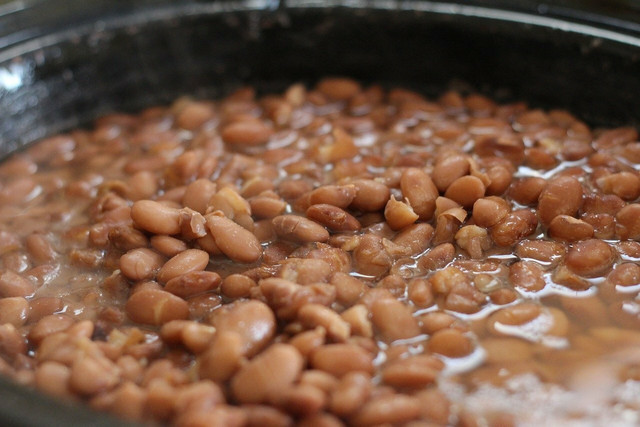


(Foto: CC0 / Pixabay / HomeMaker)
Because dried bean cooking times depend on their age and whether you’ve soaked them, there is no specific recommended time they will need to cook for. However, in general, the following guide gives rough time estimates. You can test the beans every 15 minutes near the end to determine your preferred consistency.
- Small beans (Black Beans, Black-Eyed Peas, and Navy Beans) – 45 to 90 minutes
- Medium beans (Great Northern, Kidney, Pinto, Garbanzo Beans) – 60 to 120 minutes
- Large beans (Lima, Cannellini, Butter Beans) – 80 to 180 minutes
When to Salt Your Beans:
- Salting at the beginning of the cooking process may result in a firmer bean that takes longer to cook.
- Salting in the middle of the cooking process gives your beans enough time to season properly and results in a creamy texture.
- Tip: Season the beans with salt when they are tender enough to taste (when you can bite through them).
How to Cook Dried Beans:
- Sort the beans. Look through and toss out any stones and wrinkled beans. Then rinse them under running water.
- Soak. Don’t forget to refrigerate beans after the soaking process is finished.
- Add beans to your pot and cover with three inches of water. Do not add salt yet.
- Bring to a boil and reduce to a simmer.
- Add aromatics (onions, shallots, garlic, peppers, fresh herbs, and other dried spices and herbs).
- Add salt when beans are still a bit hard, but some can be bit through – about half to three-quarters of the way done.
- Once beans are tender, you can add acidic ingredients such as tomatoes or lemons.
- Test beans every 15 minutes toward the end of cooking time to determine which texture is best for you.
More Tips for Cooked Dried Beans
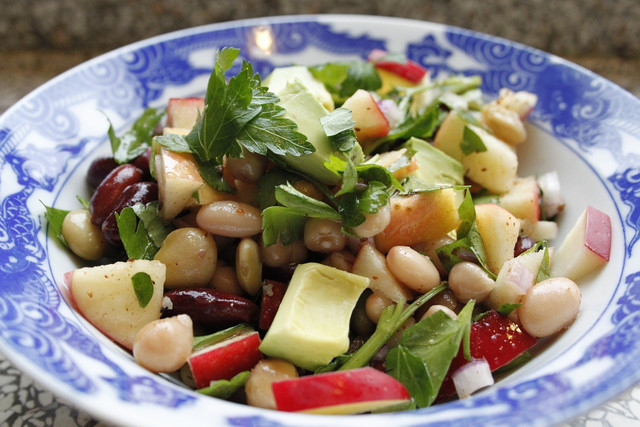


(Foto: CC0 / Pixabay / ischaap)
Another benefit of cooking dried beans is that you can make adjustments throughout the process to best suit your recipes. Here are some recommendations depending on different meals and other uses.
For Soups, Stews, and Salads
Take beans off the heat when they are cooked through, but not yet creamy. This allows them to cook more in the soup or to be firm in salads as opposed to mushy and creamy.
For Dips
Let cook until soft and tender, but still intact. Cover the beans and remove from heat. Then let the residual heat continue cooking the beans until they reach your preferred consistency.
Meal Prep
Cook a batch of dried beans to store in a sealed container in your fridge and add to meals daily such as chilis, salads, soups, or curries. Most seasoned vegans and vegetarians know that beans can add an extra oomph to their regular dishes.
Save Your Bean Broth
Save the broth when draining your cooked beans (but never the soaking water!) to use for future recipes like soups, stews, braises, and pasta sauces. Bean water can add creaminess and deepen flavor. For more on this, check out bean water: why you should save it and what to do with it. For something more experimental, use your bean water for sweets such as aquafaba meringues.
How to Store
To get the most out of your beans, let them cool after cooking for up to an hour. Then store in an airtight container in the refrigerator for three to five days. Additionally, cooked beans can be frozen for two to three months for best quality.
Utilize these tips to better understand how to cook dried beans and enhance your culinary skills to the next level.
Read More:
- How to Make Scafata: a Simple Fava Bean Recipe
- Homemade Vegan Black Bean Burger and Other Tasty Vegan Burger Recipes
- Cooking Red Lentils: Tips and Tricks
- How to Cook Bulgur Wheat: Basic Guide and 3 Easy Recipes
Do you like this post?






